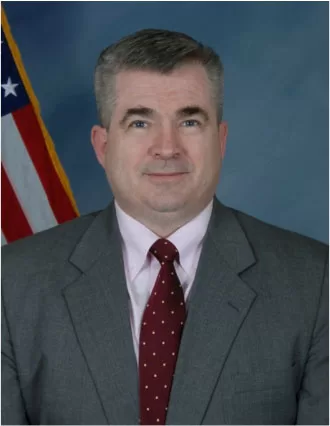Over the past decade or so, the use of term Fourth Generation Warfare (4GW) has become a culture in the Pakistani military circles and higher institutes of learning. Following some recent discussions at the Pakistan Navy War College and the fact that no senior U.S military officer (to the best of my knowledge) had ever used the term 4GW in the war theatres since October 2001, I asked Col John Keenan a former US Marine Corp officer and the Chief Editor of the U.S Marine Corps Gazette, if the U.S military has formally embraced the concept. ”our strategic thinking has evolved to a construct called Hybrid Warfare. It is not a refutation, but rather a refinement of 4GW as articulated by Lind, Wilson et alia. The major proponents of the concept are Gen. Patreaus and Gen. Mattis’ is how he responded.
The notion of 4GW first surfaced in October 1989 in an article, ‘The Changing Face of War: Into the Fourth Generation’ published in the U.S Marine Corps Gazette. Coined by William S. Lind et al, the concept represented a ‘vague sort of out of the box thinking’ about the nature and type of coming wars. It gained currency ensuing 9/11 when proponents claimed that al-Qaeda is waging a 4GW against the U.S. Interestingly, copies of the original article were found in the caves of Tora Bora in Afghanistan which suggested that al-Qaeda too was perhaps keen to grasp the concept.
The theory holds that warfare has evolved through four generations. The First Generation Warfare (1GW) dominated by massed manpower was between 1648 and 1860 and culminated in Napoleonic Wars. Industrial revolution and qualitative improvements led to the Second Generation Warfare (2GW). Labelled firepower, it surfaced during American Civil War and culminated with the trench warfare and mass slaughters of armies in Europe during WWI. The Third Generation Warfare (3GW), designated manoeuvre was introduced by the German Wehrmacht at the onset of World War II. It was characterized by combined arms operations (sea, air, and ground) and rapid manoeuvre of mechanized formations. 3GW has since been the dominant form of conventional military warfare between nation states in the contemporary times.
Lind believed that 4GW would be characterized by ‘extreme dispersion’ and ‘extreme non-linearity’. This essentially meant that 4GW would be conducted by small armed bands, operating throughout the entire theatre of war and executing what are called ‘pin prick attacks’. The theory further suggested that the nation states will have no longer monopoly over the war and the era would see a significant ascend of the non-state actors. Using asymmetrical strategy and tactics applied and sustained over extended period, 4GW does not win by traditional method of defeating an enemy’s military forces but instead seeks to overwhelm his (enemy’s) political will to resist. This is accomplished by sending of messages ’employing all available networks- political, economic, social, military- to convince an opponent’s decision makers that their strategic goals are either unattainable or too costly for the perceived benefit’. Unlike past wars 4GW is thought to have several characteristics which give it dialectic edge over 3GW. Technology and ideas are deemed to be the principal drivers of such dialectically qualitative changes and the former serves the state actors and non state actors alike.
4GW inflamed an extensive debate both, within the U.S military circles as well as outside the U.S. It had more sceptics than advocates and the arguments became intense in the wake of U.S operations in Iraq and Afghanistan. In the 22 years of its existence, the theory ‘reinvented itself several times taking advantage of the latest developments in technology or tactics, and whatever ideas or hypothesis happened to be in vogue’. Some analysts suggested that the approach is not new and its origins date back to Mao Tse Tung communist guerrilla movement (1925) in China that ended with the defeat of the nationalist army of Cheng Kai Shek. This movement became a precursor and as experience was gained in guerrilla warfare in various conflicts throughout the 20th century, the cumulative result was a new approach to war. It was adapted and used successfully by the North Vietnamese to defeat the U.S; by the Afghans to rout the Soviet Red Army, while the Taliban are said to be the latest to use the approach closely following in the footsteps of insurgents in Iraq.
Professor Francis G. Hoffman is a senior Research Fellow at the National Defence University, Washington. Amongst his contemporaries and in the U.S military circles, he is quite an authority on the modern-day issues of warfare including its ever changing nature. During my recent interaction with him, he pointed that 4GW is not very specific about what enemy is doing and is internal war – not a war in which American forces are deployed. It is about the moral and cultural decay from within than a clear theory of what adversary is doing. Like many other analysts who disagree with the entire 4GW construct, Hoffman too differ with the use of historical generation argument; ‘there are 4GW types hundreds of years ago, and there were ‘conventional threats in each generation’ he maintains. But the erudite scholar also concedes that Lind’s theory of 4GW has been a valuable contribution to the field as it was first to identify Islam or more accurately extremism and fundamentalism as a challenge.

Dr. Thomas Hammes, another senior scholar at the National Defence University, Washington is a top expert in counterinsurgency warfare. He has conducted extensive research for the U.S military on 4GW. Hammes echoes Lind’s sentiments and believes that 4GW does not attempt to defeat a more powerful military in direct combat. Rather by combining insurgent and guerrilla tactics with social, cultural and economic tools, they attempt to break the state power’s political and mental will to continue the fight. In any case, the proponents now profess 4GW only to be an evolving form of modern day insurgency.
Be that as it may, between 1989 and 2010, the critical discussions on 4GW led to the emergence of two new schools of thoughts; the Fifth Generation Warfare (5GW) and the ‘Hybrid’ Warfare. Both the U.S and U.K have hypothesized the character and nature of future wars as well as battle space in the 21st century. I intend to discuss these alongwith other contemporary warfare paradigms in some subsequent piece.
P.S: This article is based on the Author’s interaction with various U.S military institutes; examination of several papers and extensive discussions as well as insight provided by senior Professors and PhD Research Scholars at the U.S National Defence University, Washington. Some of these scholars have been the principal architects of the contemporary warfare concepts and postulating future battle space scenarios for the U.S military. These include Dr Francis Hoffman and Dr Thomas F. Lynch and Dr Thomas X. Hammes.




